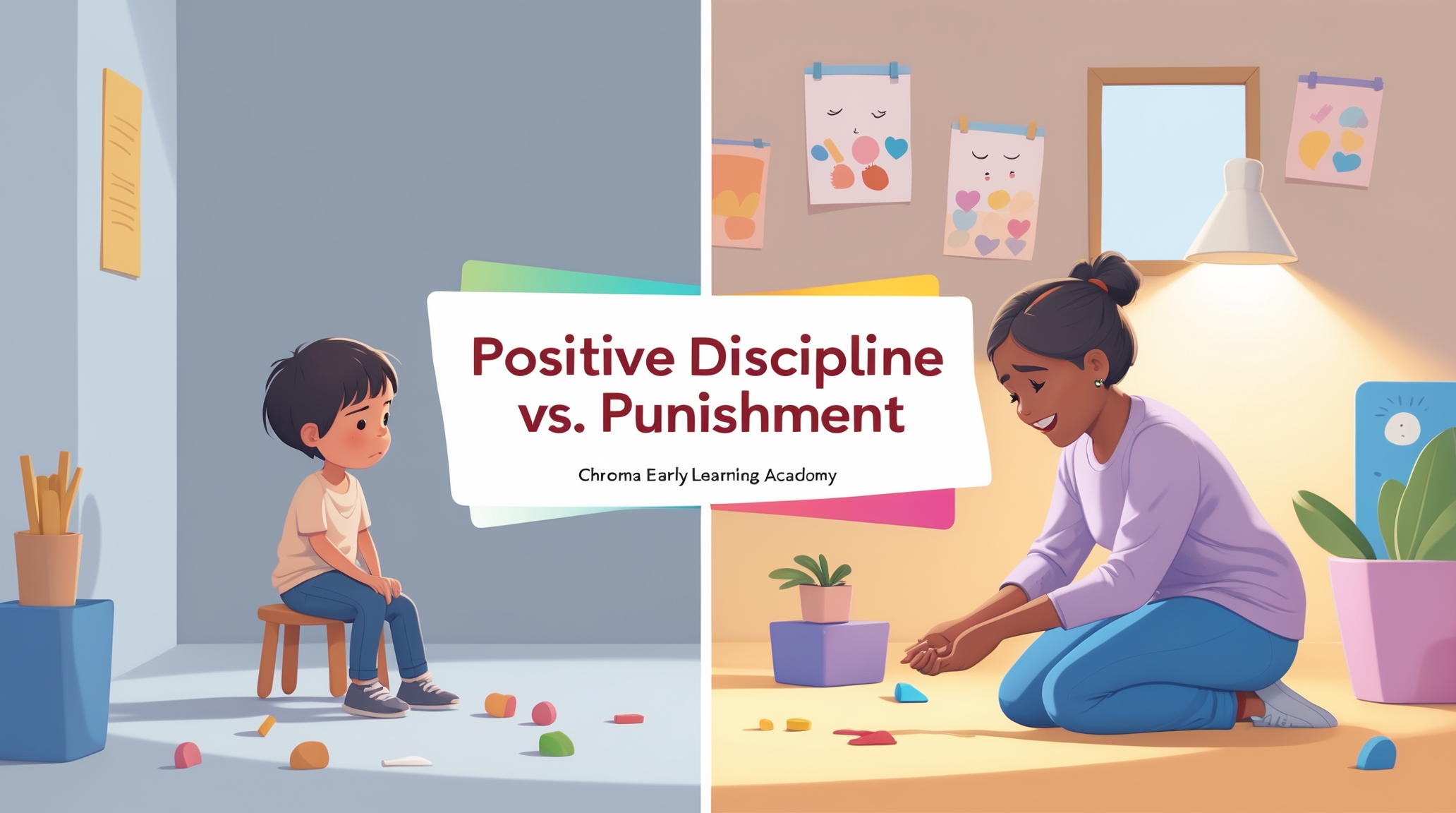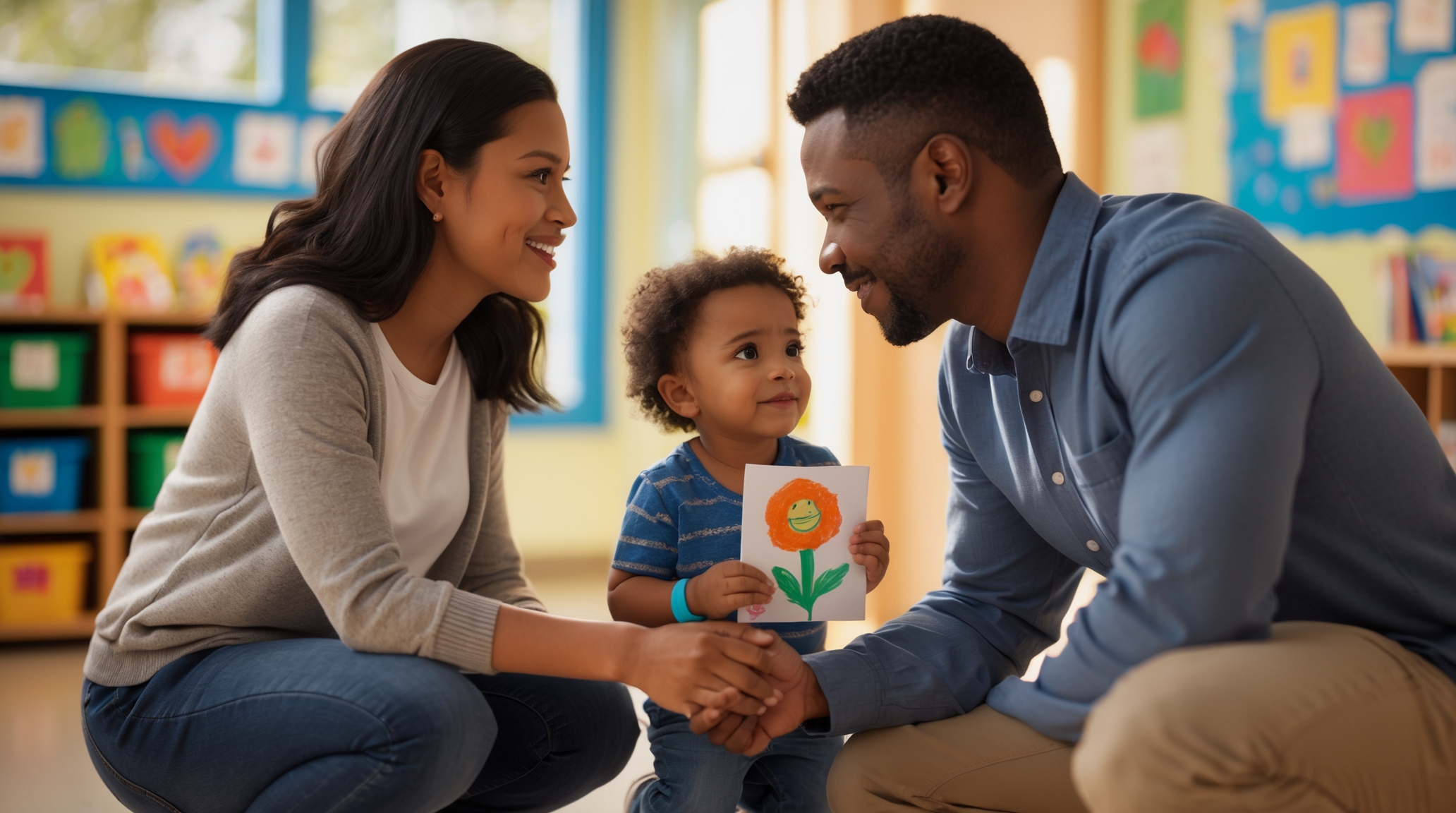
Positive Discipline vs. Punishment

Positive Discipline vs. Punishment
A Chroma Early Learning Academy Parent Resource
At Chroma Early Learning Academy, we believe every child deserves to be guided with understanding, respect, and purpose. Our role as caregivers and educators goes far beyond correcting behavior—we are here to teach, empower, and support.
One of the most important distinctions we emphasize at Chroma is the difference between positive discipline and punishment. Understanding this difference can transform how children learn, how they feel about themselves, and how they build lifelong social and emotional skills.
What Is Punishment?
Punishment is often a reactive strategy aimed at stopping unwanted behavior. It typically focuses on blame, fear, or consequences that may not relate to the behavior at hand. While it can appear effective in the moment, it does little to help children learn better choices for the future.
Common forms of punishment include:
Yelling or harsh tone
Isolating time-outs
Taking away privileges without explanation
Public shaming or embarrassment
These methods may result in:
Short-term compliance
Increased anxiety or resentment
Lowered self-esteem
Disconnected child-caregiver relationships
At Chroma, we know that fear may stop a behavior—but it doesn’t teach the lesson.
What Is Positive Discipline?
Positive discipline is our intentional, child-centered approach to behavior guidance. Rather than focusing on what a child shouldn’t do, we focus on teaching what they can do instead. It’s a balance of kindness and firmness, always grounded in empathy and developmental understanding.
Positive Discipline focuses on:
Teaching skills, not enforcing obedience
Setting clear, consistent boundaries
Validating feelings while redirecting behavior
Encouraging cooperation, empathy, and accountability
Strengthening the relationship between adult and child
Real-Life Examples at Chroma:
Instead of: “You’re being bad—go sit by yourself.”
We say: “I see you’re having a hard time. Let’s take a break together and find a calm way to talk about it.”Instead of: “If you throw that again, I’m taking it forever.”
We say: “Blocks are for building, not throwing. If you throw them, we’ll put them away for now.”Instead of: “Stop it right now or else!”
We say: “You have two choices: use kind words or take a quiet moment in the cozy corner. What would help you right now?”Why Chroma Chooses Positive Discipline
Children at Chroma are developing quickly—but they still need guidance, structure, and support as they navigate big emotions and social situations.
We use positive discipline because:
It helps children build self-regulation and problem-solving skills
It creates a learning environment that is safe, respectful, and inclusive
It prepares children for real-world challenges through emotional intelligence
We’re not just correcting behavior—we’re teaching values, life skills, and compassion.
Let’s Work Together
Consistency between home and school helps children feel secure and supported. Here’s how you can reinforce positive discipline at home:
Offer choices: “Would you like to brush your teeth before or after your story?”
Stay calm in the storm: “You’re upset. Let’s take deep breaths together.”
Focus on solutions: “The milk spilled. How can we clean it up together?”
Need support or ideas? Our team is always here to help.

Final Thought
At Chroma Early Learning Academy, we’re committed to nurturing every child with heart, patience, and purpose. Positive discipline isn’t about being soft—it’s about being intentional, respectful, and connected.
Together, let’s raise children who not only behave—but belong, grow, and thrive.
